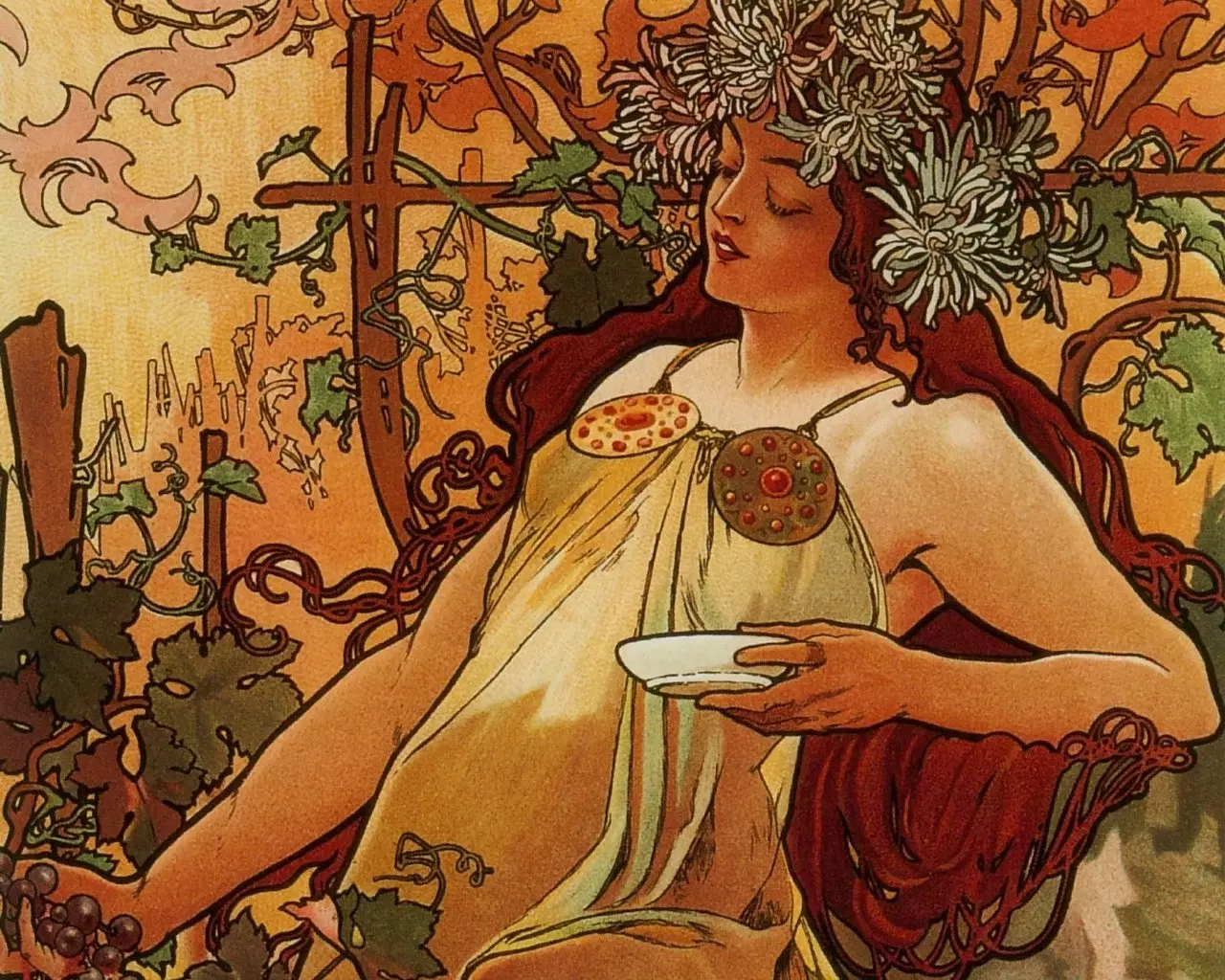
Autumn by Alphonse Mucha
Before winter comes and evergreen and deciduous leaves reveal their identity, we would do well to welcome summer's little brother . Colder and more humid, but accompanied by pleasant rain and a range of colors dominated by fiery reds and oranges, soft pinks and purples or energetic yellows and golds.
It is also time to welcome the berries and mushrooms that plague forests and hills, to the rustle of fallen leaves when walking on them, to the drop in temperature that invites us to spend more time at home, to the increasingly shorter days and longer nights.
in his book new york new york, Javier Reverte He affirms that, during his stay in the "city that never sleeps" he realized that: "the range of autumnal tones is much broader and more subtle than that of spring, where the colors are more resounding and less nuanced”. And we will not be the ones to contradict him.
Many are the artists who have succumbed, throughout history, to the fall colors festival . Trying to reproduce, through his eyes and his color palette, the color ranges that this season of the year seems to store in nature by mixing hot and concentrated elements , as opposed to others that are somewhat colder and more ambient. And now that it seems that he is beginning to stick his foot out from under the door, we take a walk through some works that aim to capture this time of year.
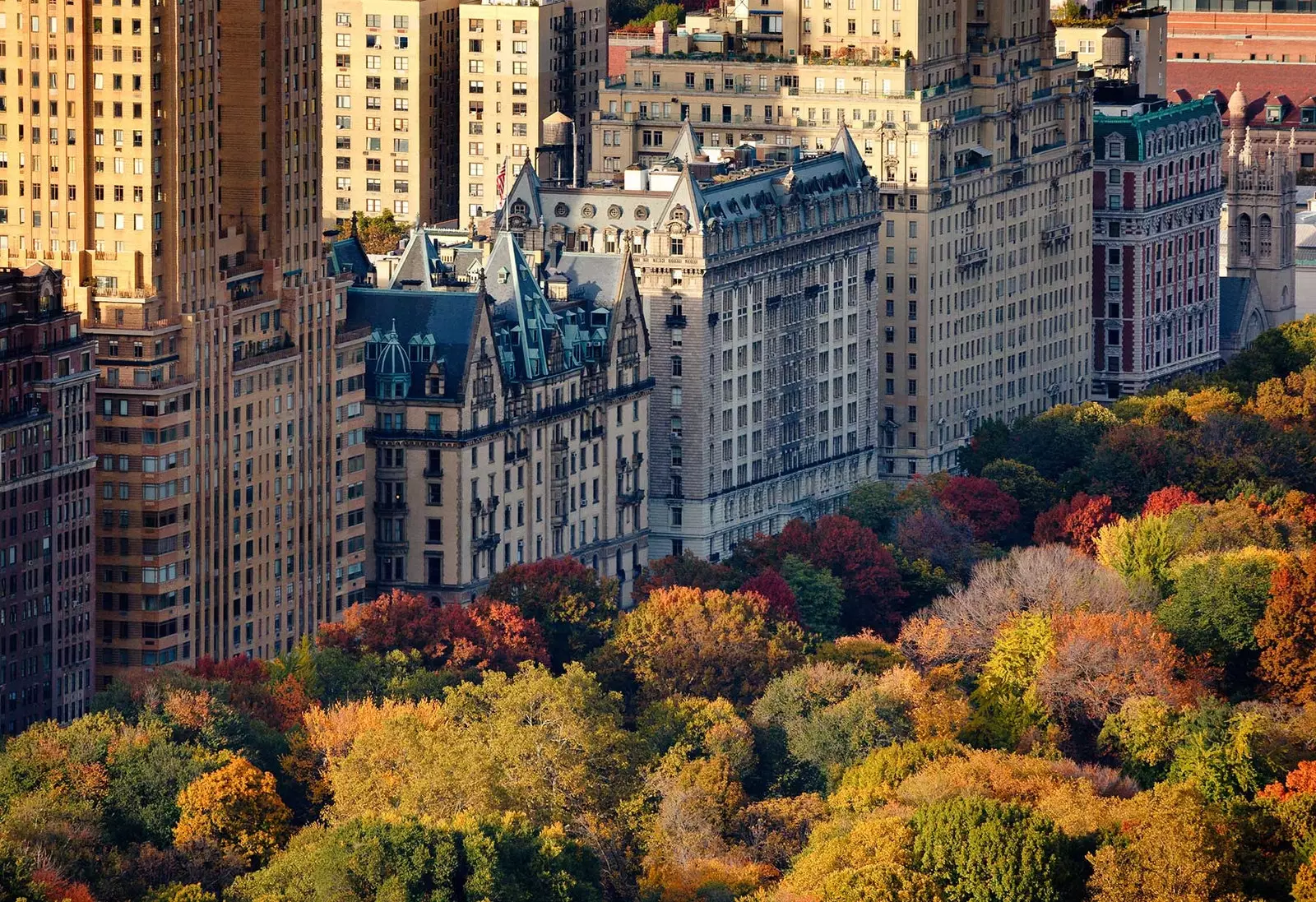
When autumn inspires art
1.**La Vigne Rouge, Vincent Van Gogh (Post-Impressionism, 1888)**
We are facing the only painting that the Dutch artist sold in his lifetime, or so it is said. The print represents the moment of the grape harvest during an autumn sunset, in which reddish tones surround everything around it.
When he painted this picture, Van Gogh was living with Paul Gauguin in Arles and "The Red Vineyard" is an example of Van Gogh's efforts to learn from the example of Gauguin in his interest in color and ornament.
The author was able to capture the essence of this typical scene of the daily life of French Provence , in which a group of women exhausted by the hard work of grape harvesting become part of the landscape. The predominant colors are red and bright yellow which inevitably makes the striking sun in the upper right corner draw our attention deeply.
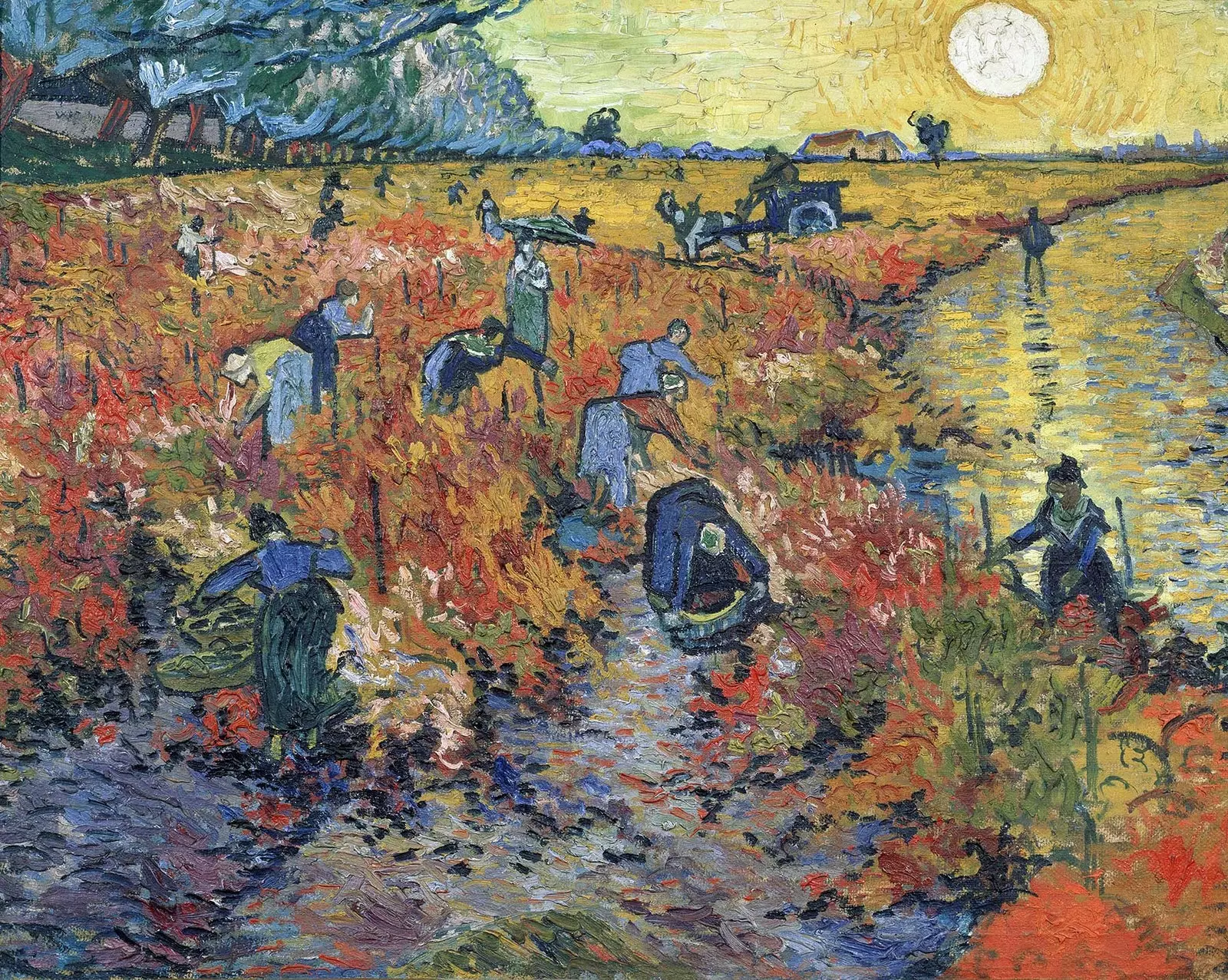
La Vigne Rouge, Vincent Van Gogh
2.**Autumn, Alphonse Mucha (Art Nouveau, 1896)**
This Czech artist was one of the pioneers in embracing "decorative arts" to place them on the same level as those considered Fine Arts. In addition, too, he was one of the first related to the Art nouveau and his influence on the decoration, illustration, advertising or design in later years it is extensive.
A lot used to introduce in his works the image of young, beautiful and healthy women surrounded by neoclassical garments that seem to float and all kinds of flowers and fruits. A style that was frequently imitated.
In this work we are before a autumn allegory, which is represented by one of her beautiful girls surrounded by autumn plants, sitting in the middle of nature and with a crown of chrysanthemums on her brown hair, since the ocher, brown and reddish tones are typical of this time of year . The work in question It is part of a quadriptych known as "The Four Seasons" that the author made to illustrate a calendar of the year 1986.
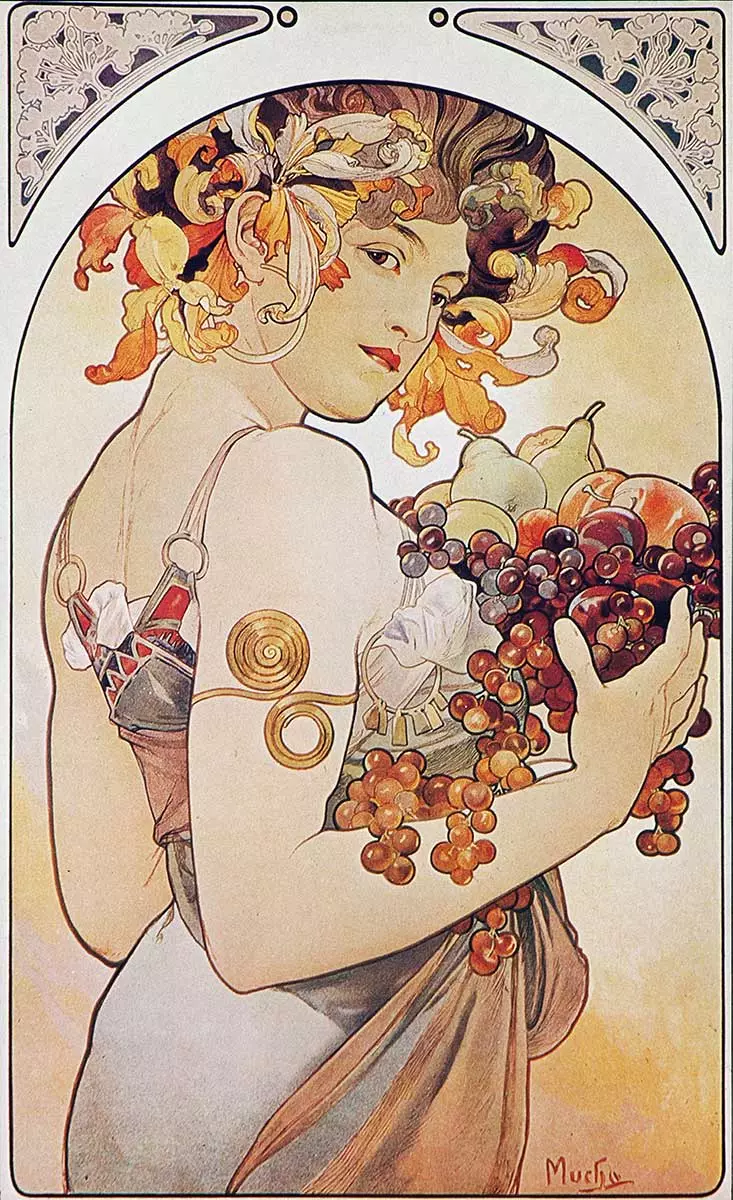
Woman with grape - Autumn allegory (Alphonse Mucha)
3.**Autumn, Giuseppe Arcimboldo (Mannerism, 1563)**
Arcimboldo is, after Bosch, one of the most eccentric, talented and original of the entire Renaissance. his clever anthropomorphic still life were made up of fruits, flowers, animals and objects , and enjoyed great popularity among his contemporaries.
Instead, after his death, his work was forgotten. With the arrival of the surrealists in the 20th century, His paintings were rediscovered and he was considered a predecessor of the Surrealist style. . This painting recreates a male face in which it includes a whole mycological catalogue, as well as vines, pumpkins and other vegetables. An irrational painting that belongs to a series of similar paintings called "Seasons".
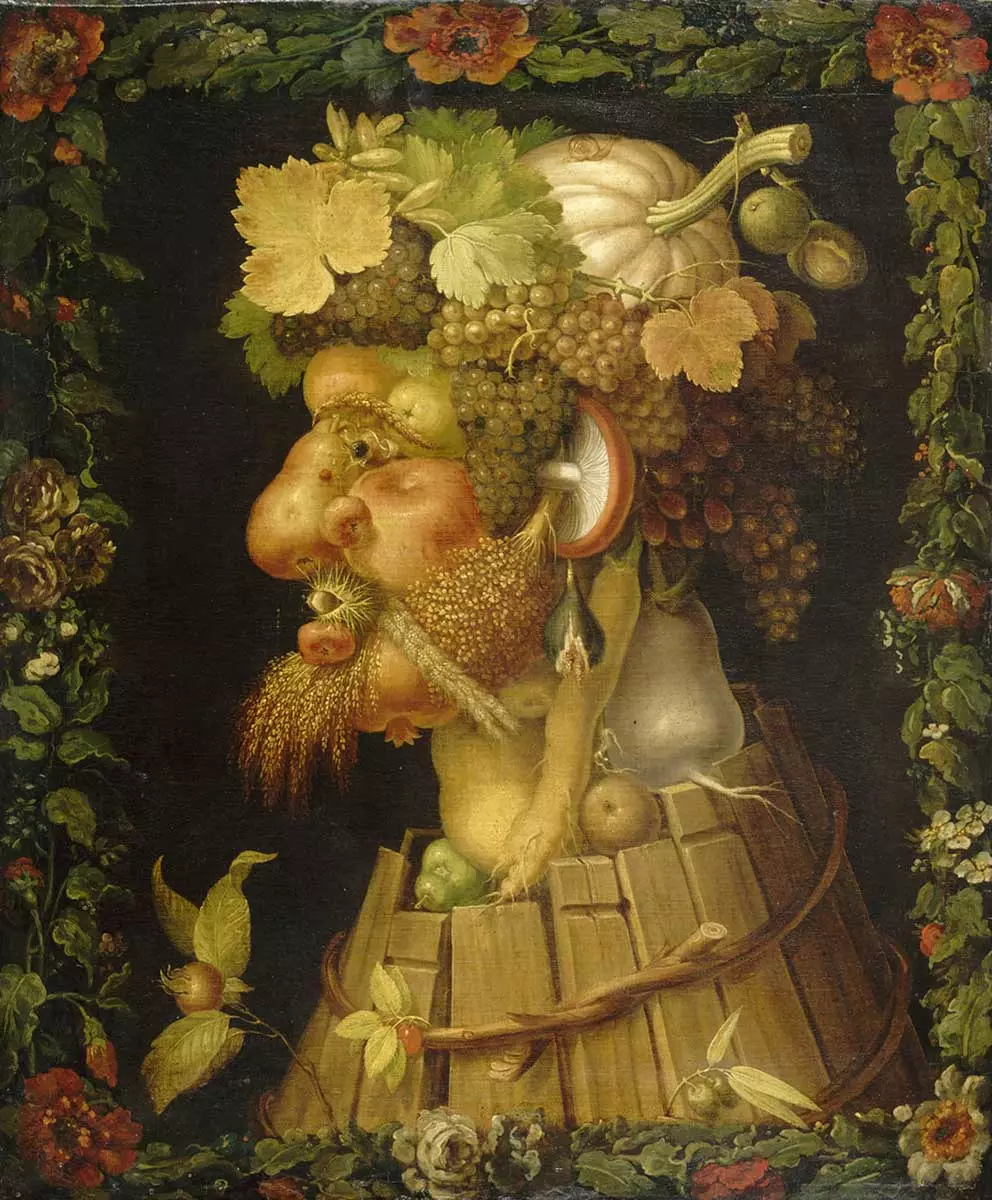
Autumn, Giuseppe Arcimboldo
4.**Birch woods in autumn, Gustav Klimt (Symbolism, 1903)**
Of the 3,000 drawings and sketches that remain of the work of Klimt almost none deals with landscapes, since when he dedicated himself to painting on this subject, he did directly on canvas , in the open air, as the Impressionists did.
Most of these scenes were created near the Austrian atter lake , where he used to spend some summers and, on some occasions, the artist hid the easel behind some bushes to be able to continue, the next day, in the same place.
Interestingly, this oil n It speaks to you of autumn and not of summer in those places . In the painting you see a birch forest in which the trees occupy the entire surface, thus making us lose any reference to the sky or the horizon. The trunks, distributed in a practically geometric way, and the leaves that cover the entire floor present an evocative autumnal effect with ochre, orange and green tones.
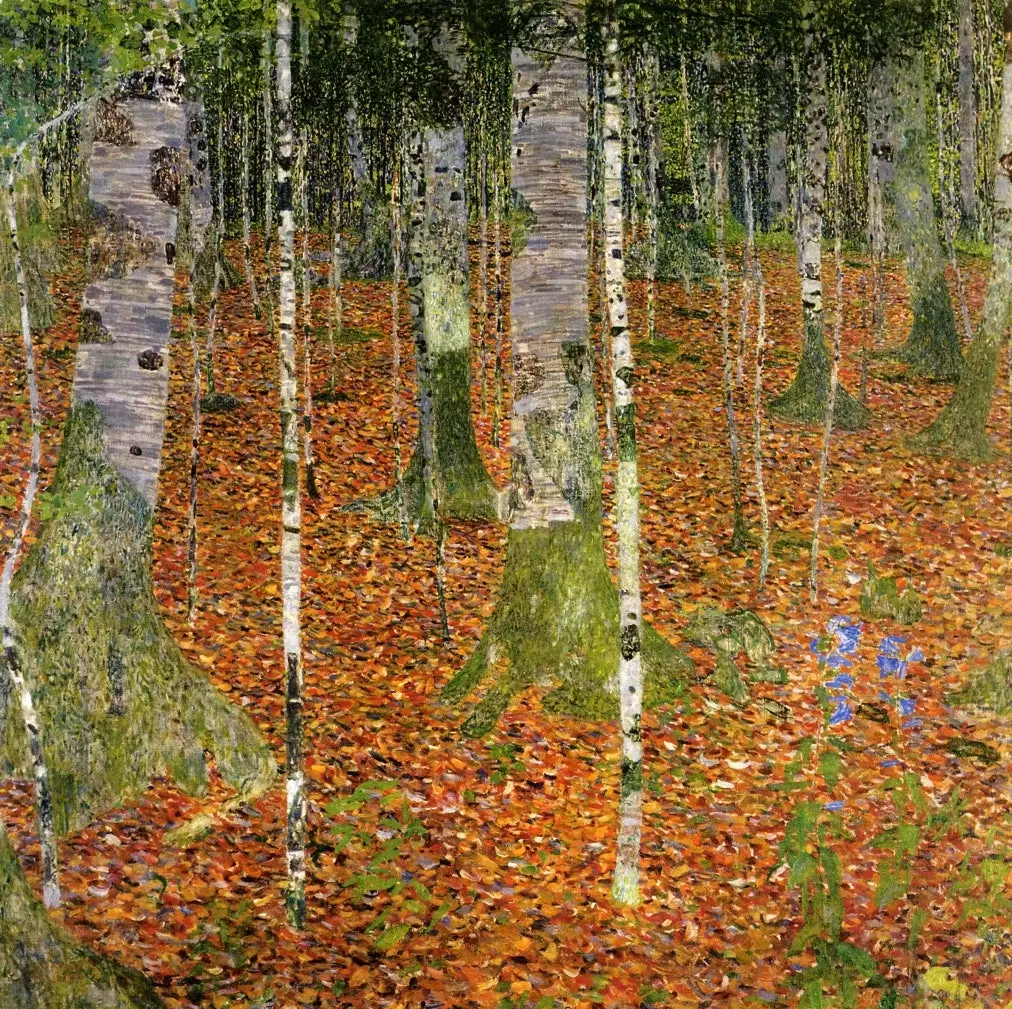
Birch Woods in Autumn, Gustav Klimt
5.**L’Automne ou La Grappe de raisin rapportée de la Terre promise, Nicolas Poussin (French Baroque, 1660)**
This painting belongs to the series of four oil paintings Les Quatre Saisons , the last set made by this French painter. It was commissioned in Rome, between 1660 and 1664, for the Duke of Richelieu, nephew of Cardinal Richelieu.
At that time, Poussin was, in his sixties, fully aware of the possible proximity of his death. So, with a stoic resignation , took advantage of enjoy the small pleasures worldly life gave him and to meditate on the great existential issues such as destiny.
This pictorial ensemble is made up of landscapes with elegiac from the Old Testament that take us to the different seasons of the year and times of day. Executed when he had it against him that sickness made his hand tremble, his vision of the four seasons is a philosophical reflection on order in the natural world.
This work, in particular, reflects a crepuscular tone, which stands out using blue in different shades, and which symbolizes mature age. Furthermore, his iconography evokes the Christian perception of themes such as death and resurrection, as he completes the allegory with a scene depicting the text of the grapes of Canaa, also known as the Promised Land.
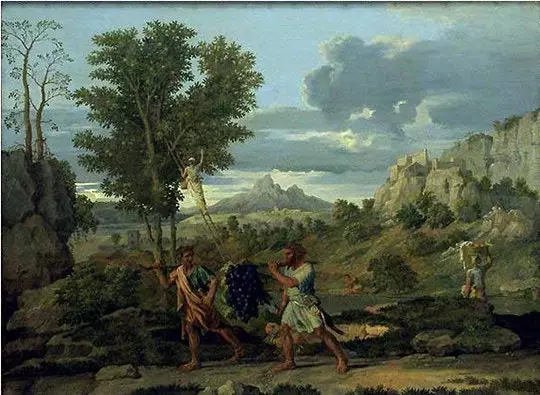
L'Automne ou La Grappe de raisin rapportée de la Terre promise, Nicolas Poussin
